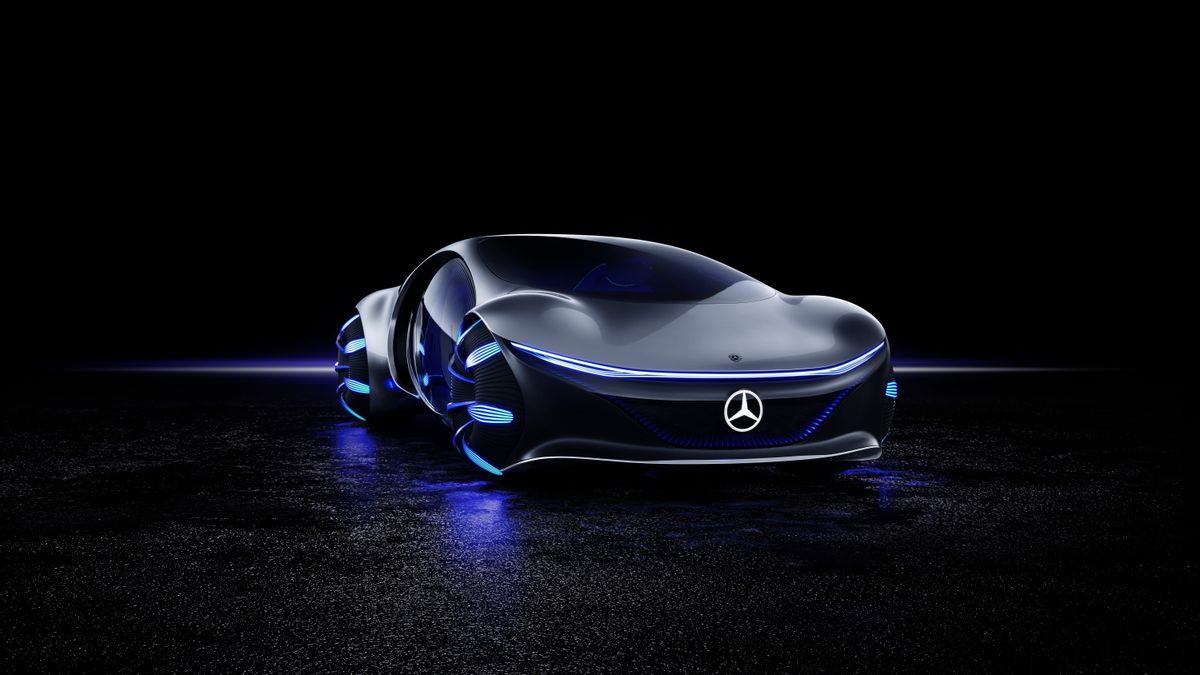JAKARTA - Vision AVTR is Mercedes-Benz's vision of the future and their first partnership with entertainment giant Disney. The AVTR moniker is a reference to James Cameron's groundbreaking film Avatar, which came out in 2009. AVTR stands for Advanced Vehicle Transformation, as a car is not a car like a living organism connected to the "driver" and passenger on an organic level.
With this year's edition of IAA Mobility, an International Motor Show, taking place in Munich, Germany, between September 7 and September 12, AVTR is taking one step further towards an unbreakable connection with humans. Mercedes-Benz uses brain-computer interfaces (BCI) to allow passengers, including the driver, to control the vehicle with their minds.
BCI's technology isn't anywhere near the standard in the auto industry but, as the brand points out, it's no longer a sci-fi film. It is already being used in medical research, allowing people with limited or no mobility to lead more independent lives.
One day, it will be used in cars too. This technology offers passengers an opportunity to make less effort in connecting with the car. So all that's left is pure, unadulterated driving pleasure. Vision AVTR is a way of driving autonomous vehicles.
Mercedes-Benz envisions that BCI technology will allow passengers to personalize the experience without having to lift a finger to the touch screen or. This way, they will be able to adjust lighting and climate controls, change playlists, or select navigation controls. This will be done via a head-mounted BCI device, which will read brain activity after a one-minute calibration.

Visitors to the Mercedes-Benz booth at IAA 2021 can experience this firsthand. That doesn't mean that they'll be given the rare opportunity to actually sit inside the gorgeous AVTR concept, let alone tinker with its controls, but it's the next best thing.
A chair mockup from AVTR, with a fully digital dashboard, will be available at the exhibition site. Once you sit in it and mount the BCI device on the back of your head, dots of light are projected onto the dashboard.
The point of light serves as a visual stimulus, and the BCI device will record and analyze brain waves, then determine which point of light the user focuses on. This will then trigger targeted functions in the mock vehicle: choosing a parking spot, turning day to night, and other odd choices.
“Mercedes-Benz marks another milestone in the merging of humans and machines with research and development of brain-computer interface applications in cars. BCI technology has the potential to further improve driving comfort in the future,” said Britta Seeger, Member of the Board of Management of Daimler AG and Mercedes-Benz AG, responsible for Sales of the product.
The idea is not new, because from the beginning, AVTR was seen as the main bond between humans, machines and nature. Everything about this concept car is tailored to suit, from the aerodynamic lid at the rear that helps the driver "communicate" with the car and the outside world, to the integration of recyclable and sustainable materials, to the way the owner unlocks the vehicle by having that sync with the beat. their own heart.
The AVTR is best described as mankind's dream of a bright, intelligent and secure future, told through the design language of Mercedes-Benz. The car is no longer an object, but an extension of who we are. The Vision AVTR is also fully electric and autonomous, and part of the natural environment in a way only a dream car can. This is truly a brain-controlled human dream car.
The English, Chinese, Japanese, Arabic, and French versions are automatically generated by the AI. So there may still be inaccuracies in translating, please always see Indonesian as our main language. (system supported by DigitalSiber.id)








